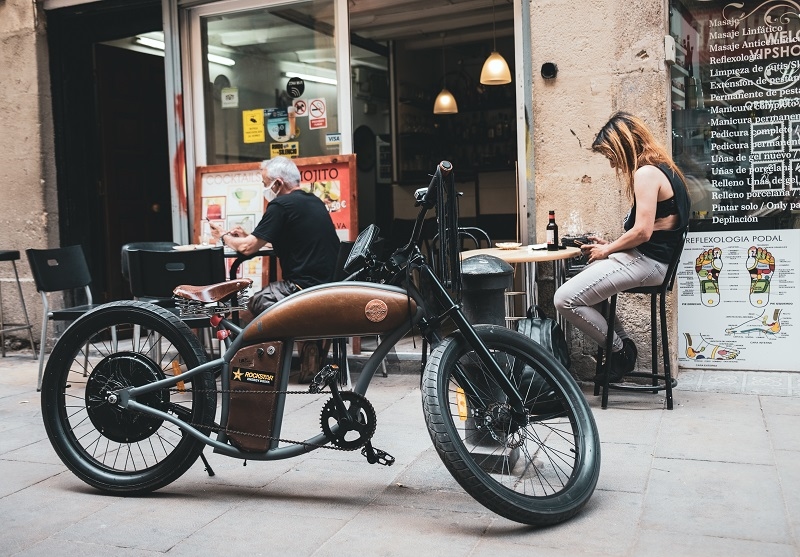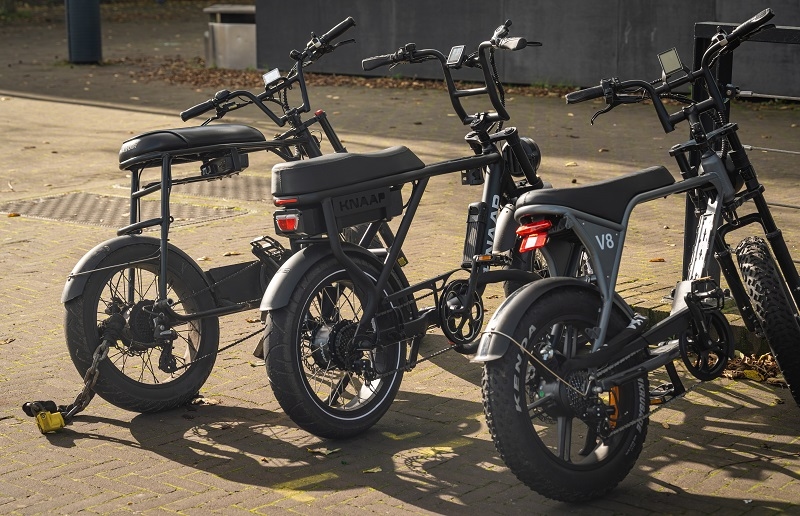
The motorcycling landscape is evolving, and it's not all about how loud your engine sounds or how long your exhaust pipe is. The revolution is electric. As companies shift towards sustainability, new electric cruiser trends are gaining traction, reshaping the way riders in America consider style, performance, and power. At the forefront of this transition is a resounding question: Are American riders really ready to adopt electric Harley-Davidsons?
Harley-Davidson, a brand that is synonymous with rough freedom and cacophonous V-twin motors, has joined the electric fray with its LiveWire brand. The overall cruiser class is also experiencing a wave of new innovation. But the reaction among old-school riders has been divided. This post considers the development of electric cruiser range trends, prevailing U.S. demand for electric Harleys, cruiser EV market insights, and what the future holds for the cruiser EV market.
Traditional cruisers dominated the roads of America for generations. They include low-slung frames, long wheelbases, and engines that growl with every twist of the throttle. But just as the global car industry is accelerating toward electric power, cruiser motorcycles are following suit. A previously niche market is now seeing genuine interest.
Electric cruiser trends are no longer on the drawing board. They are now available for purchase commercially, boasting high torque, low upkeep, and environmentally friendly performance. But are these details sufficient to win over the heart of die-hard Harley fans?
Harley-Davidson's first electric bike, the LiveWire, debuted to huge enthusiasm. It was smooth and powerful, and fast—to 0 to 60 mph in about three seconds. But its sales are another story.
The initial response was sluggish. Riders were intrigued, not convinced. Price was named as being too steep, range too small, and traditional engine rumble missing as cautionary reasons. Nevertheless, while slow to become a convert, Harley-Davidson has continued working to hone its electric portfolio, suggesting the company is playing the long game.
Current U.S. electric Harley demand is not great, but it does suggest positive growth opportunities. The LiveWire One and S2 Del Mar models are positioned to strike a superior price-performance trade-off, putting them within reach of the average rider. The reception of these models will be indicative of electric cruiser trends going forward for the American market.
To appreciate the emergence of electric cruisers, one must examine further afield cruiser EV market trends. The rush towards electrification is not occurring in a vacuum. It's driven by a number of converging factors.
Companies like Zero Motorcycles and Energica are already making waves with offerings that cut directly into the gas cruiser competition. Harley-Davidson's LiveWire brand, while still building its identity, is also part of this shift. With every new model introduced, cruiser EV market trends reveal a market that is more competitive and innovative.
If anything can kill or save an electric cruiser, it is the battery. American e-cruiser battery technology has come a long way in the last few years. From the lithium-ion batteries to the new solid-state technologies in the works, the competition for higher energy density, fast charge, and better thermal management goes on.
Most electric cruisers now have a real-world range of 70 to 150 miles on a single charge. This is highly dependent on the style of riding, terrain, and speed. Motorcyclists who are used to riding long distances might find this range restrictive, but developments are in the pipeline.
American firms are investing in research that tries to improve form factor and battery chemistry. Wireless charging pads, modular battery systems, and regenerative braking are becoming commonplace today. It all sets the bar higher in terms of what electric cruisers can offer by way of user convenience.
The use of e-cruiser battery technology USA cannot be overestimated. The longer and more steady the range, the more usable such bikes are for everyday riding. Continued investment in research into batteries is crucial to continue the momentum of electric cruiser trends throughout the U.S.

The range is still one of the largest issues for prospects. Whereas city commuters tend to ride short distances, cruiser riders make long trips where consistent battery life is essential. Electric cruiser range trends thus become the focal discussion item.
This is changing, and electric cruiser range trends are moving in the correct direction. Purchasers can expect upcoming models to deliver better performance, especially in range, dependability, and charging ease.
One of the challenges that electric cruisers face is cultural rather than technical. Here’s a closer look:
This fight is representative of a greater problem within the shifting electric cruiser trends. While technology is revolutionizing the ride, manufacturers must shift as well by creating new ways to engage riders emotionally who value tradition just as much as speed.
The future of EV cruisers is both promising and ambiguous. Several factors will determine how widely electric cruisers will keep pace in the U.S.
In short, the destiny of EV cruisers will depend on how well manufacturers blend innovation and heritage. Those who strike the right balance between the two are likely to spearhead the next generation of motorcycling.
Electric cruiser trends are redefining the definition of riding in America. While early adoption has been cautious, momentum is building. Growing demand for electric Harleys in the United States, modest as it is, is an expression of a desire to explore new territory. Cruiser EV market assessments are pointing to a convergence of innovation, infrastructure, and shifting cultural values to enable this transformation.
As e-cruiser battery technology USA continues to evolve and trends in electric cruiser range grow ever more favorable, electric bikes will become more practical for the daily commute as well as for extended travel. Ultimately, the destiny of EV cruisers hangs on whether or not producers can successfully transpose performance, style, and emotional involvement into a new electric package. The highway to the future may be quieter, but it's no less exciting.
This content was created by AI